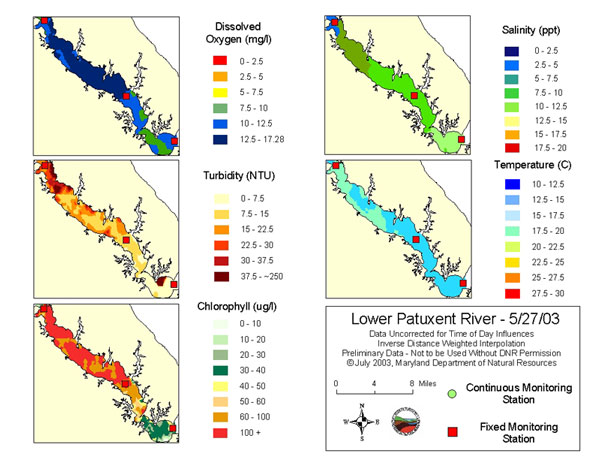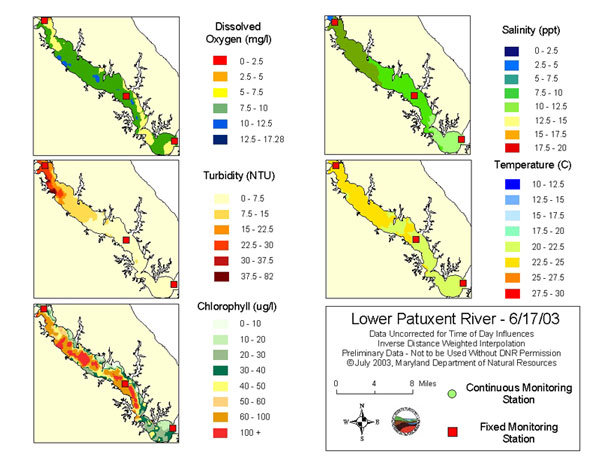 Print This Page
Print This Page Print This Page
Print This Page |
Lower Patuxent River Experiences Algal
Blooms/High Chlorophyll Levels in May/June 2003
The lower Patuxent River has been the site of Mahogany Tide (Prorocentrum
minimum) and Karlodinium
micrum blooms during May and June 2003. Monitoring
indicated that Prorocentrum was present in the lower Patuxent and its
tributaries
from late-May through early-June with maximum concentrations reaching 243,800
cells/ml. Dense blooms such as these have resulted in areas of hypoxia, or
low oxygen, a condition which is stressful to Bay life.
The potentially toxic algae, Karlodinium micrum, has been observed on the lower Patuxent from mid-June to present (7/10/03), with exceptionally dense blooms observed in St. Leonard's Creek. Karlodinium has been found to produce sufficient toxin to kill fish with concentrations of at least 10,000 to 30,000 cells/ml. Various blooms observed in St. Leonard's and Battle Creeks this year have met or exceeded this concentration, although no conclusive evidence has yet found or linked its toxin to fish kills. At the time of publication, however, investigations are continuing into suspicious fish kills co-occuring with Karlodium. For more information on these blooms visit the Harmful Algal Blooms (HAB) page.
Water Quality Mapping confirms the ubiquitous occurrence of blooms on the lower Patuxent this year, with May and June sampling cruises showing system-wide high chlorophyll concentrations (Figures 1 and 2). See the Water Quality Mapping Data Page for more maps from the Patuxent and other Bay tributaries.
Figure 1. May 27, 2003 Lower Patuxent River Water Quality Mapping Data.

Figure 2. June 17, 2003 Lower Patuxent River Water Quality Mapping Data.
